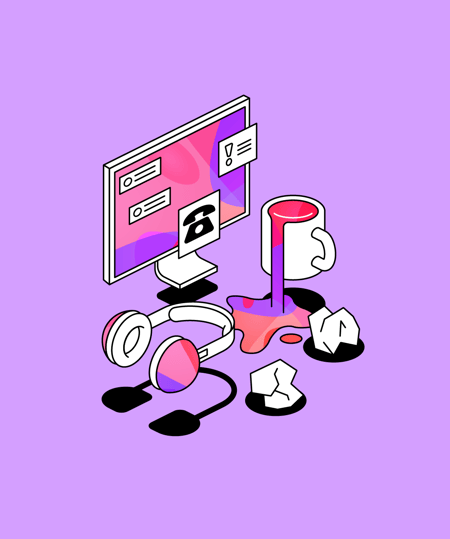5 reasons why higher education courses should be accessible for all
By creating higher education courses that are accessible by design, colleges can build a more inclusive learning environment for all students to succeed. Here we explore why making this shift is so critical for ensuring positive student outcomes.
 3 min read
3 min read
 Published: 9 Sep 2024
Published: 9 Sep 2024
 Jacob Goodwin
Jacob Goodwin


Colleges have a responsibility to create an environment where all students, regardless of ability or background, have equal access to education. This is crucial for fostering diversity, promoting equality, and ensuring academic success across a broad demographic range.
In the context of US higher education institutions, the responsibility for making course content accessible for all learners often falls at the feet of faculty members, in collaboration with the Center for Teaching & Learning.
This responsibility is not only rooted in ethical considerations but is also mandated by legal frameworks such as the Americans with Disabilities Act (ADA).
And whilst there is often an appetite among faculty to share their knowledge with as wide a range of students as possible, the simple steps they can take to make it happen aren’t always so straightforward.
Here we’ll explore exactly how higher education institutions can make their courses more accessible as well as sharing why it is so important that they do so in the first place.
Why should colleges prioritise making courses accessible?
Legal and ethical obligations
The ADA prohibits discrimination against individuals with disabilities in all areas of public life, including education.
In the academic context, this means that colleges and universities must provide reasonable accommodations to ensure that students with disabilities have equal access to educational opportunities.
Faculty members, and instructional designers, play a vital role in fulfilling this obligation by creating courses and instructional materials in a way that is accessible to all students.
Failure to do so can result in legal repercussions for the institution and can perpetuate systemic barriers that prevent students with disabilities from fully participating in academic life.
Promoting Diversity, Equality and Inclusion (DEI)
Accessible courses create a welcoming environment for all students, regardless of their abilities or backgrounds.
This fosters a diverse and inclusive learning community where everyone feels valued and supported.
Research has shown that diversity in the classroom enhances the educational experience for all students by exposing them to different perspectives and promoting critical thinking skills.
By making their courses accessible, colleges contribute to creating a more inclusive campus culture that celebrates diversity and recognizes the unique strengths and contributions of all learners.
Enhancing learning outcomes
Universal Design for Learning (UDL) is a framework that guides the development of accessible courses by providing multiple means of representation, engagement, and action and expression.
UDL principles benefit all students, not just those with disabilities, by catering to diverse learning styles and preferences.
For example, providing captioned videos not only supports students who are deaf or hard of hearing but can also improve comprehension for students who are learning English as a second language or who prefer to read along while listening.
By incorporating UDL principles into course design, higher education institutions can enhance learning outcomes for all students and create a more equitable learning environment.
Expanding educational opportunities
Accessible courses remove barriers for students with disabilities, allowing them to fully participate in academic life and pursue their educational goals.
Studies have shown that students with disabilities who receive appropriate accommodations are more likely to succeed academically and graduate from college.
Increased accessibility helps to break down systemic barriers and empower students with disabilities to achieve their full potential.
Reflecting institutional values
Read any institutional strategic plan and it’s clear to see that accessibility and diversity are hot topics across the US collegiate system.
By prioritizing these areas, colleges demonstrate their commitment to creating an equitable and inclusive learning environment. This reinforces the institution's values and reputation.
Making courses accessible is a tangible way to align teaching practices with these institutional values and contribute to creating a campus culture that is truly welcoming to all.
How can institutions make their courses accessible?
There are numerous strategies that can be employed to make courses more accessible.
Taking inspiration from leading colleges such as the University of Alberta and the CAST Universal Design for Learning 3.0 guidelines, here are some key areas to consider:
Course materials: Provide course materials in multiple formats, such as digital text, audio recordings, or braille. Ensure that all digital materials are compatible with assistive technologies.
Instructional methods: Utilize a variety of teaching methods, such as lectures, discussions, group activities, and hands-on experiences. Also, aim to provide clear and concise instructions, and offer opportunities for students to ask questions and clarify expectations.
Assessments: Offer flexibility in assessment formats, such as allowing students to choose between written essays, oral presentations, or creative projects.
Provide ample time for students to complete assessments, and consider offering alternative testing environments or extended time for students with disabilities.
Technology: Using accessible technologies can help increase student engagement with course content, allowing students to return to their notes and improve their academic output.
Communication: Be mindful of communication styles and preferences. Offer multiple ways for students to communicate with you, such as through email, office hours, or online discussion forums.
Use clear and concise language, and avoid jargon or technical terms that may be unfamiliar to some students.
Physical environment: Ensure that classrooms and other learning spaces are accessible to students with mobility impairments. Consider seating arrangements, lighting, acoustics, and other environmental factors that may impact student learning.
By incorporating these strategies into course design and teaching practices, colleges can create a more inclusive learning environment where all students have the opportunity to succeed.
Glean is helping institutions across the US make this transition - click the link below to find out more.
More from Supporting Students
View All
 5 min read
5 min read
Understanding and supporting students with barriers in higher education
Take a deeper look into students with barriers to learner. Here, we discuss who they are, what challenges they face and what institutions can do to support them.

 3 min read
3 min read
Understanding and supporting time poor students in higher education
Here, we take a deeper dive into who the time poor learners are, and their unique challenges. Explore strategies to support students juggling multiple roles and responsibilities, to create a more inclusive and flexible learning environment.

 3 min read
3 min read
Navigating the AI landscape in education: Helping or hindering student success
AI has transformed what it means to teach and to learn. It is crucial now for higher education leaders to determine how they deploy AI to help, rather than hinder, student success.





